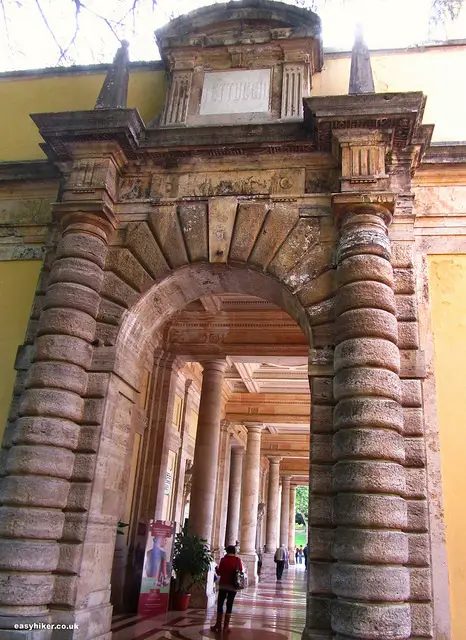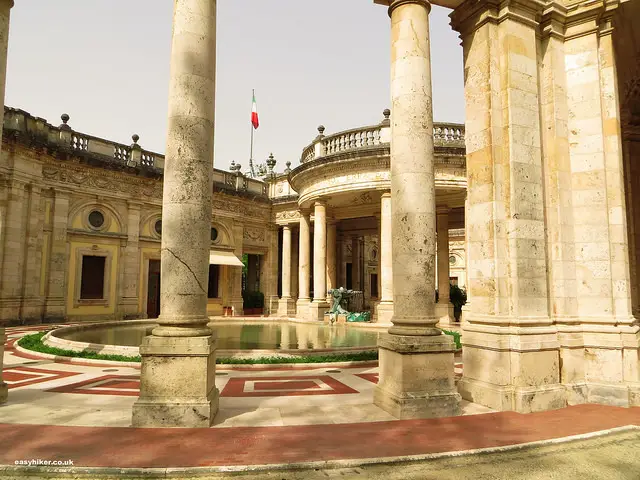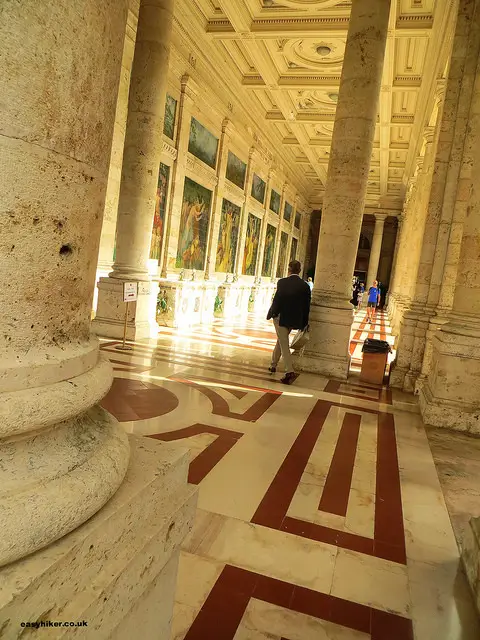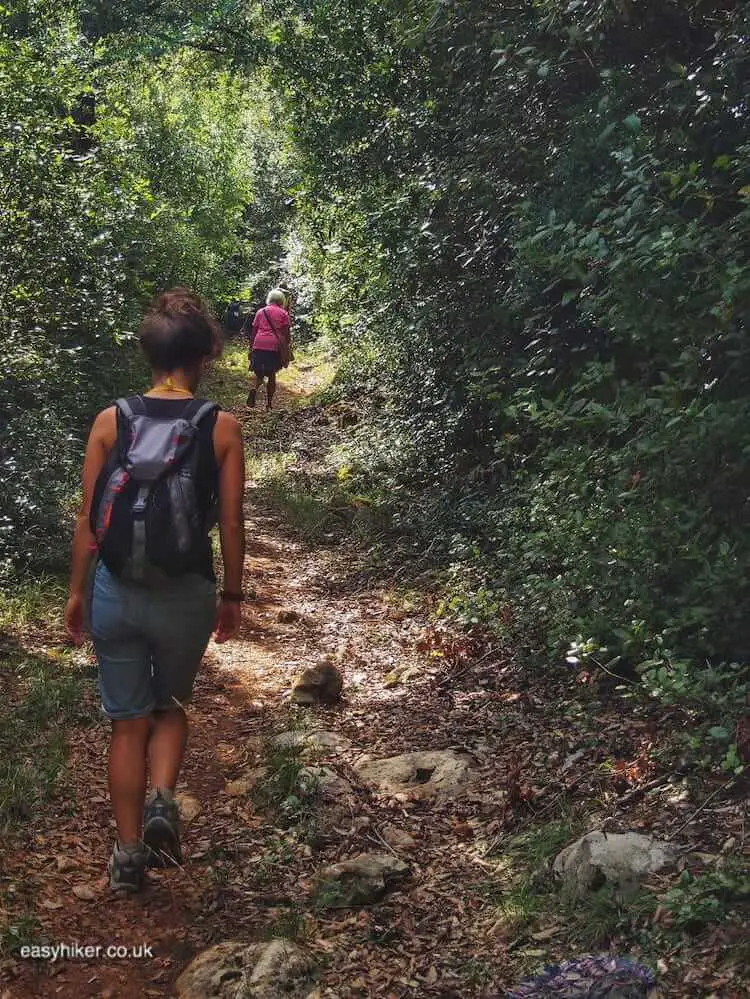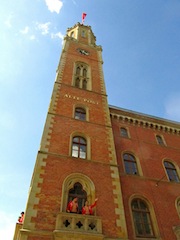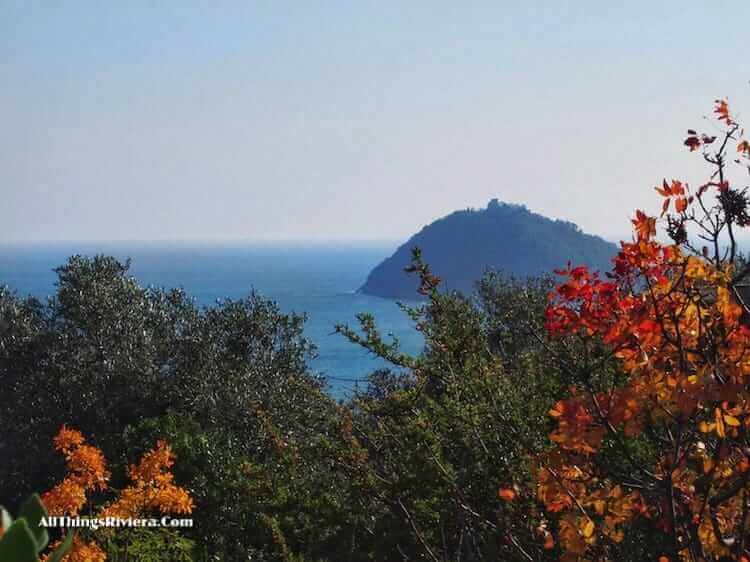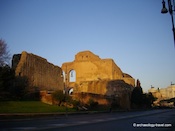Columns and cupolas in search of nervous excitement Montecatini prides itself, with a certain justification, on its reputation as a “city of the arts”.
The Montecatini Contemporary Art Museum is well stocked and the proud owner of a large-scale work by Joan Mirò, and for as long as anybody can remember, artists have always loved the resort.
Verdi and all the other greats of the Italian opera came here frequently (sometimes to perform their works), but visual artists, too, sought peace, quiet and inspiration in Montecatini – including major figures such as Dior, Versace and Coco Chanel (do they count? I believe they should), René Magritte, Giorgio de Chirico and the film makers Vitorio de Sica and Pier Paolo Pasolini (surely the most unexpected name on the list).
Read also: New York of the Middle Ages
Looking at the Architecture in Montecatini Terme
Montecatini’s greatest works of art, however, are the buildings of the Terme themselves, specifically the Stabilimento Tettuccio, constructed to house (and protect) the town’s most important spring whose waters are less saline than the waters from the other springs and therefore drinkable.
The tour guides have, I believe, been instructed to hammer home the message that the Terme were built in the styles of the Belle Epoque and the Art Nouveau. In fact, with the exception of the 18th century entrance gate …
… the Terme were built between 1923 and 1927 when the Art was not quite so Nouveau anymore and the Belle Epoque was well and truly over. This insistence of the guides, I suspect, is rooted in a fear that someone could use the F-word – and accuse the Terme of being a specimen of Fascist architecture. (Mussolini’s March on Rome took place in 1922.)
They need not worry. Mussolini and his Blackshirts would not have liked the Terme very much – they would have found it too decadent, presumably, with too much young-boy flesh on show.
Rather than representing a “fascist style” (whatever that may mean), the architecture of the Terme can, I believe, be best described as “Emperor Augustus on drugs”.
The elements of classical architecture are all there: columns, friezes, cupolas, but they are arranged in a way which appears to subvert rather than to celebrate the key principles of the Grand Imperial style, searching for nervous excitement rather than grandeur and tranquillity, frivolity rather than dignity, theatrical gesture rather than understated noblesse.
The Terme once more remind us that the phrase “less is more” never carried much weight in Italy. The More Is Not Nearly Enough school, conversely, can look back on a long tradition.
The one thing that connects nearly all of the many things which are so great about Italy – its food, its music, Sophia Loren – is that Italians are not overly afraid of throwing a touch of vulgarity into the blender. Unlike some of their neighbours, the French in particular, for whom vulgarity in any form is considered the greatest possible sin. (There is a reason why French opera, which was very popular in the 19th century, is generally neglected today while Verdi, Puccini et al. still rule the repertoire roost.)
At the same time, Italians understand that vulgarity is best enjoyed in small doses: it works a little like salt, in food and, as a matter of fact, in the Montecatini spring waters.
Read also: The Celestial City of the Via Francigena
A little of it is good for you, but too much can ruin everything: the Montecatini waters are said to have a detoxifying effect which can easily turn laxative, even overly laxative, when drunk in large quantities. (Which is – just to make this clear – where any parallel between the Terme waters and their architecture ends. You are encouraged to consult a doctor before treating yourself to the Montecatini waters, whereas no such precautions need to be taken before looking at the buildings.)
There is one more thing to which you should treat yourself before leaving the area: a trip to the near-by caves of Monsummano Terme has to be on every visitor’s itinerary.
Buy yourself a day ticket for the Grotta Giusti resort complex, explore the labyrinth of underground walkways and relax afterwards in the year-round open swimming pool – having sampled the sauna-like temperatures of the caves, its naturally warm spring water (35°) will be just the refreshment you are craving for …
… and provide a welcome respite before the rigours of the Via Francigena hiking trail.


